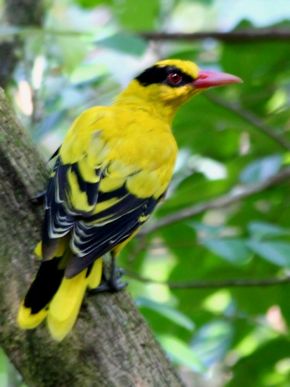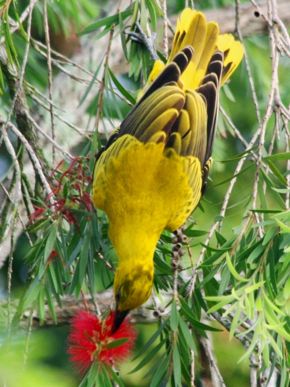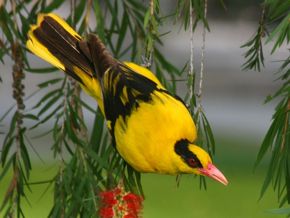“The Black-Naped Oriole (Oriolus chinensis) is the only oriole species that can be found in Singapore. They can be commonly seen in our parks and gardens, and even in our housing estates. With its bright yellow and black plumage, they can be quite conspicuous. However, as they like to stay hidden in the foliage, they can be difficult to observe.
“Recently, a Black-Naped Oriole was briefly encountered in a mangrove boardwalk. The oriole was rather skittish and it disappeared into the mangrove forest after only three quick shots. It was only after downloading and reviewing the pictures that I realised that instead of the usual symmetrical yellow and black patterns on its back, this bird appeared to lack symmetry in its tail feathers. One black feather was either missing or have yet to grow on the right side of its tail (above left). From the appearance of the plumage, I would guess that this is an immature bird that is growing or moulting into a full adult.
“Images of an adult (left) and a juvenile (above right), showing the different stages of the oriole’s plumage are attached for comparison. The adult’s plumage showed black in its central tail feathers and had a black eye band while the juvenile’s black in those areas are still not visible. The immature’s plumage falls in between the two.
“The photos of the adult and juvenile were taken separately during an earlier outing when they were found to be seeping(?) nectar from the flowers of a bottle brush tree. The Black-Naped Orioles are known to have a varied diet consisting of mainly fruits and insects. I did not know that Black-Naped Orioles can be harvesting nectar from flower to flower.”
Kwong Wai Chong
Singapore
28th July 2010












One Response
Lovely information recorded. It’s going to be very helpful for feild identification of these lovely birds. The pictures are very descriptive.